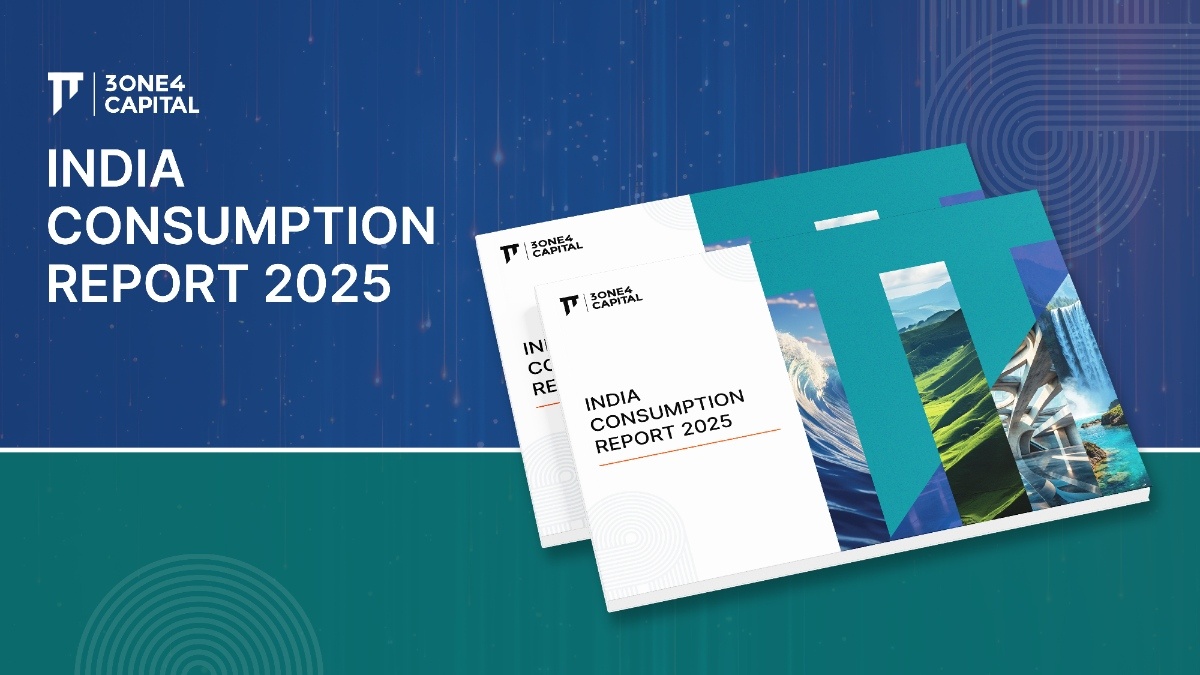
Tariffs as a Turning Point to Accelerate India’s GDP Growth
India is projected to reach a GDP of ₹4,26,45,000 crore (US$ 5 trillion) by 2027 and is on course to surpass Germany by 2028. By 2030, India is set to become the world’s third-largest economy with a projected GDP of $7.3(+) trillion. This trajectory, understandably, places India at the centre of the global economic dislocation at a time when geopolitical tensions, trade wars, and tariff battles are rewriting the norms of globalisation.
The Trump administration’s renewed push for tariffs on imports from major economies, including India, represents more than a short-term trade disruption. It is a structural challenge to India’s export competitiveness. However, it must also serve as an inflection point for domestic policy and align national priorities. Rather than resisting or retaliating, the Government of India must use this moment to recalibrate, to deregulate its domestic economy, actively support its manufacturers, and pivot towards a “Make in India 2047” plan that lifts manufacturing to +30% of GVA, up from ~16% today growing at +10% YoY.
If handled with conviction, the Trump tariffs could be the forcing function that the GOI has long needed; an external pressure that drives the Central Administration to achieve the internal reforms that have been overdue for decades.
The immediate response to U.S. tariffs is measured, not retaliatory. These tariffs are being treated as the beginning of a negotiation. The next steps will demonstrate the preservation of Indian national interests.
- India will engage Washington with a strategic package that reduces tariff frictions while extracting concessions for Indian exporters.
- In sectors such as textiles, pharmaceuticals, electronics, and seafood, where Indian exporters are most exposed, India could push for phased reductions or exemptions.
- Simultaneously, India can offer reciprocal tariff cuts on select U.S. imports such as fruit, alcohol, cars, semiconductor hardware, (aircraft, defence equipment) and other U.S-produced output, improving goodwill and access to advanced U.S. technologies that can lower Indian production and consumption costs.
- India will also rapidly deepen alliances across both the Global North and South, expanding diversification opportunities for its industries and reducing over-reliance on a single market.
This pragmatic approach aligns with the experiences of Israel and Vietnam, both of which deepened their U.S. market access by lowering barriers rather than escalating disputes. For India, the U.S. accounts for 18% of exports; preserving and expanding this share is essential to cushioning GDP growth.
Deregulation at Home: Removing India’s Self-Inflicted Barriers

Tariff headwinds and economic condescension from abroad have proven clearly that economic might is the only contributing force to global relevance. India must use this moment to accelerate long-overdue reforms at home. India’s exporters often struggle less with global competitors and more with domestic red tape.
- Ease of Doing Business: Streamlining export approvals, reducing unnecessary approvals and documentation, delivering timely GST refunds, accelerating RBI foreign exchange approvals and Competition Commission clearances etc. can directly lower transaction costs. If 95% of applications are approved anyway, why not grant automatic approvals and free businesses from bureaucratic permissions and friction?
- Regulatory Certainty: Exporters and investors need assurance against “tax terrorism,” retroactive demands, and sudden policy reversals. Clear safe-harbour provisions, modelled on OECD contract law, can anchor long-term trust. A special drive to reduce and eliminate unnecessary tax litigation is also urgently needed.
- Exit and Entry Flexibility: Allowing smoother FDI inflows and easier exits encourages global capital to back Indian exporters, knowing that capital mobility will not be obstructed.
Every hour spent battling paperwork is an hour lost to global competitors. If Trump tariffs are the external shock, deregulation is India’s internal antidote.
Unleashing State Support for Manufacturers and Exporters

No country has scaled its manufacturing sector without active state support. China used subsidies, tax incentives, and preferential loans to become the world’s factory. The U.S. routinely deploys large-scale industrial policy through policies like the CHIPS Act, the Inflation Reduction Act, and multi-decadal local defence procurement.
The Government of India must act with similar intent and trust its own citizens as partners to build a more resilient economy.
- Financial Support: Extend low-cost credit, export insurance, go-to-market support, and R&D subsidies for manufacturers and exporters in all the PLI-focused high-impact sectors like electronics, semiconductors, energy, and defence equipment. Increase the Loan Guarantee schemes for MSMEs to enable them to grow faster.
- Technology Access: Lower import tariffs on U.S., Japanese, and European machinery and components, enabling Indian manufacturers to modernise without cost penalties. Reduce the cost of capital equipment for automation to improve productivity and quality.
- Market Diversification: Incentivise exporters to tap new geographies in Africa, Latin America, and ASEAN to reduce reliance on U.S. demand cycles.
- PLI 2.0: Expand and deepen Production Linked Incentives with sharper focus on labour-intensive industries like textiles, toys, furniture, electrical components, chemicals, and footwear alongside capital-intensive sectors like EVs and semiconductors.
These steps would protect small and medium exporters, the backbone of Indian employment, while ensuring that India does not miss the global supply chain reordering triggered by U.S. tensions.
Make in India 2047: Targeting 30% Manufacturing GVA

The GOI’s ambition must extend beyond firefighting tariffs to designing a generational strategy. A “Make in India 2047” vision should aim to elevate manufacturing GVA to +30% by 2047.
This requires three layers of transformation:
1. Infrastructure Circuit Completion: Complete the industrial corridors, plug logistics inefficiencies, reduce costs, and achieve world-class standards in power, ports, and rail. Logistics costs, at 11–12% of GDP, must fall to 7–8% to match global competitiveness.
2. Land and Labour Reforms: As 12 million youth enter the workforce annually while the major economies are ageing rapidly, India can be the world’s workshop. Skilling programs in electronics, robotics, pharmaceuticals, and green tech must be scaled aggressively. Labour codes must balance flexibility with worker protection to attract global manufacturers. Land acquisition for industrial utilisation is a long-pending urgent priority.
3. Innovation in Manufacturing: Move beyond low-cost assembly to design-led exports. The GOI must aggressively incentivise investments in semiconductors, EVs, batteries, defence manufacturing, chemicals, electrical components, and green energy, positioning itself as a trusted supplier of critical technologies in a fragmented world.
By 2047, India must not only be the world’s third-largest economy in size, but also one of its most resilient manufacturing hubs.
Failing to accelerate reform and empower manufacturers and exporters risks job losses, social instability, and a drag on GDP growth of up to 0.4%. Conversely, implementing reforms and supporting Indian producers builds resilience and accelerates India’s climb into the top tier of global economies.
For the GOI, Trump’s tariffs must be viewed as a wake-up call. This experience is a moment of truth: either remain trapped in incrementalism or seize the urgency to implement long-delayed common-sense reforms and unleash the Indian economy’s economic vigour.
By negotiating strategically, deregulating decisively, supporting manufacturers with long-term intent, and framing a bold Make in India 2047 plan, India can empower her industry and transform tariff pressure into industrial opportunity.
The world is watching whether India will step up in this moment. The answer must be a resounding and historic yes, and a demonstration of leadership through action.
DISCLAIMER
The views expressed herein are those of the author as of the publication date and are subject to change without notice. Neither the author nor any of the entities under the 3one4 Capital Group have any obligation to update the content. This publications are for informational and educational purposes only and should not be construed as providing any advisory service (including financial, regulatory, or legal). It does not constitute an offer to sell or a solicitation to buy any securities or related financial instruments in any jurisdiction. Readers should perform their own due diligence and consult with relevant advisors before taking any decisions. Any reliance on the information herein is at the reader's own risk, and 3one4 Capital Group assumes no liability for any such reliance.Certain information is based on third-party sources believed to be reliable, but neither the author nor 3one4 Capital Group guarantees its accuracy, recency or completeness. There has been no independent verification of such information or the assumptions on which such information is based, unless expressly mentioned otherwise. References to specific companies, securities, or investment strategies are not endorsements. Unauthorized reproduction, distribution, or use of this document, in whole or in part, is prohibited without prior written consent from the author and/or the 3one4 Capital Group.


.webp)












